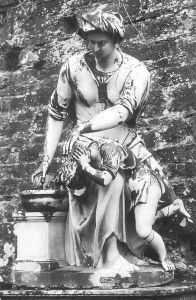Valerio Cioli Paintings
Valerio Cioli was an Italian sculptor who flourished during the Renaissance, a period of great cultural change and achievement in Europe that spanned from the 14th to the 17th century. Born in 1529 in Settignano, a village near Florence, Cioli was part of a family of stonecutters and was trained in the art of sculpture from an early age. He was active mainly in his hometown of Florence, where he became a prominent sculptor of his time.
Cioli's work is characterized by its dynamic form and expressiveness, qualities that embodied the Mannerist style that was prevalent during the later years of the Renaissance. This style was known for its artificial elegance and the use of elongated forms, which can be seen in some of Cioli's work. He was a versatile artist, producing both religious and secular works, including statues, fountains, and tombs.
One of Cioli's most famous works is the 'Il Bacchino', one of the first known sculptures representing a person with dwarfism realistically and sympathetically. Created for the Medici family, this statue is a notable example of his skill in capturing human likeness with both empathy and a sense of individual personality. Cioli's other notable works include the tomb of Carlo Marsuppini in the church of Santa Croce, and the Fonte del Bacchino in the Boboli Gardens in Florence.
Cioli's career was marked by a successful collaboration with other artists of his time, which was not uncommon in the Renaissance period when large workshops often undertook significant commissions. Despite the lack of extensive documentation about his life, it is known that Cioli's contributions to sculpture were well respected by his contemporaries. His works can still be admired today and serve as a testament to the artistic achievements of the Renaissance.
Valerio Cioli passed away in 1599 in Florence. His legacy is preserved in the sculptures he left behind, which continue to be studied and appreciated for their craftsmanship and place in the history of Italian Renaissance art.
